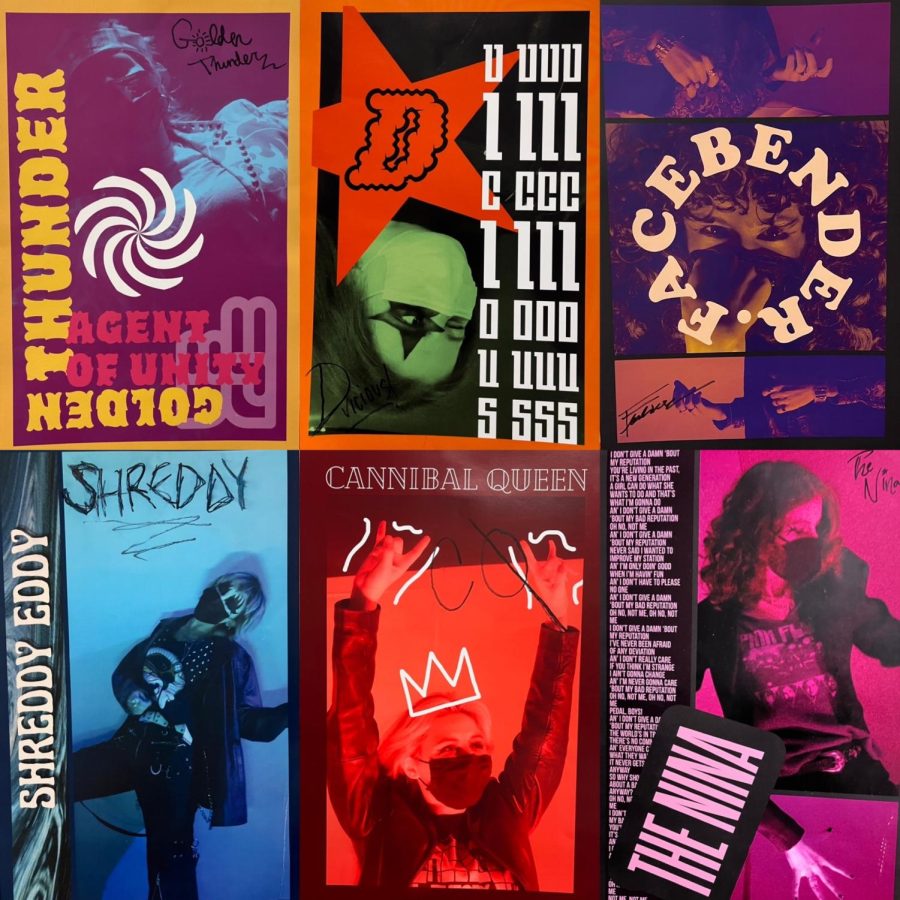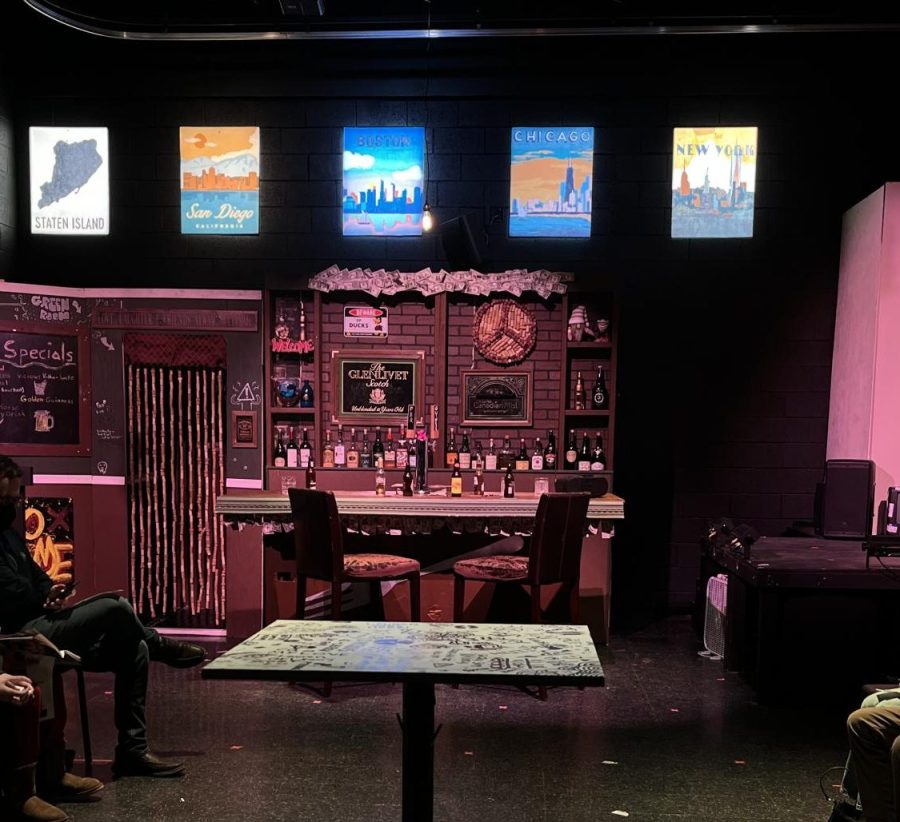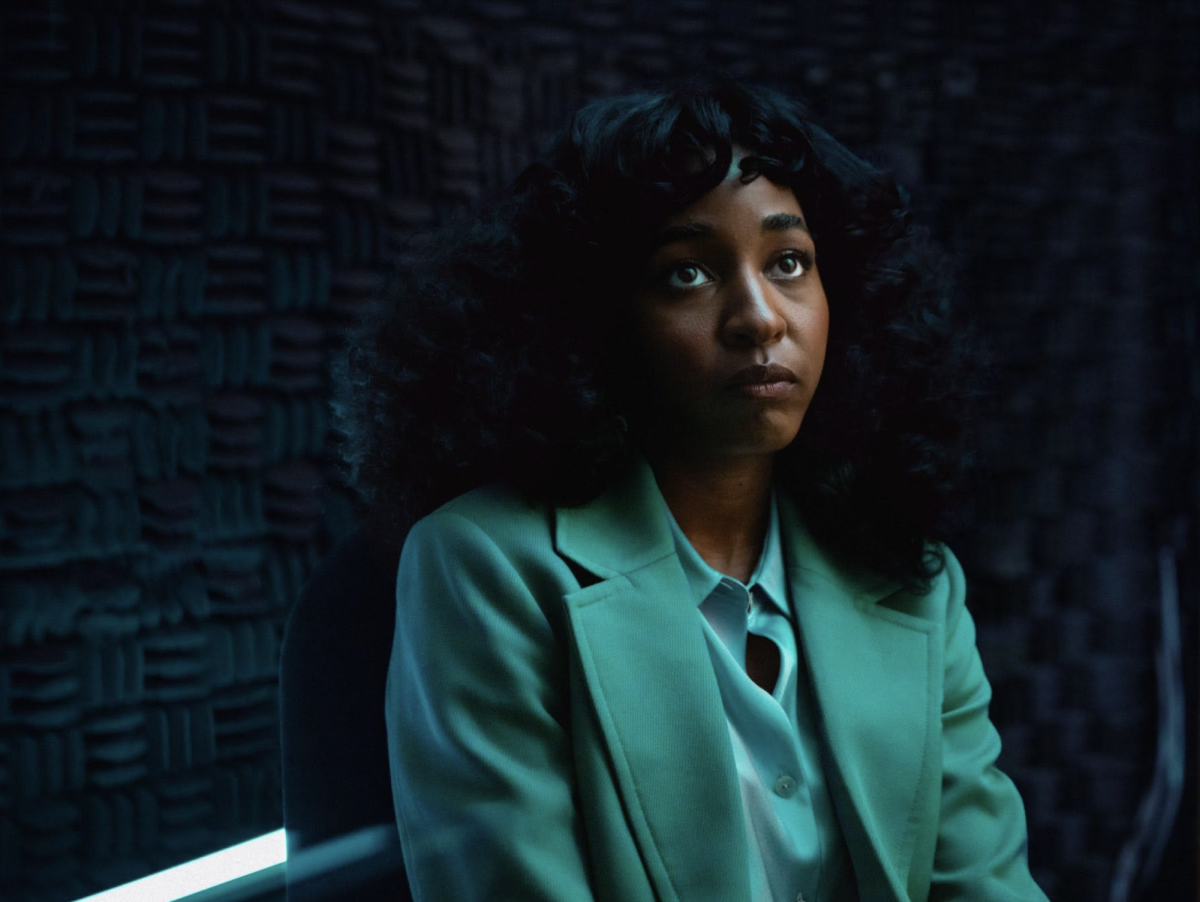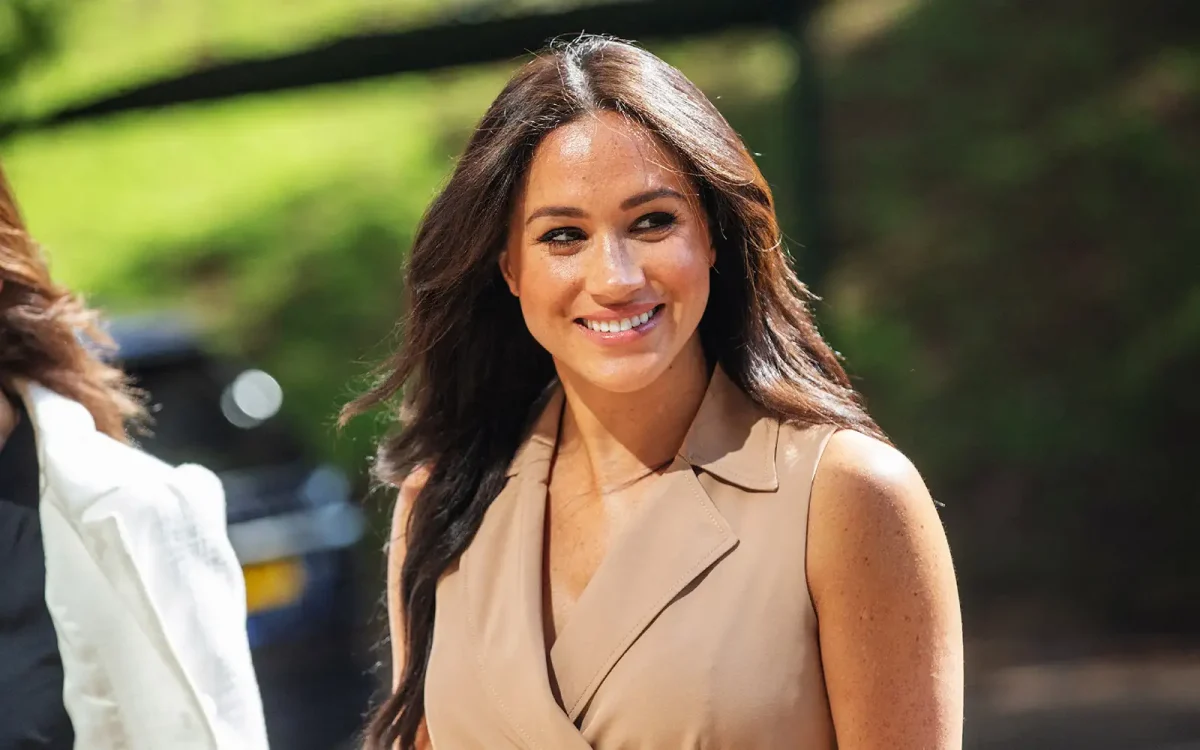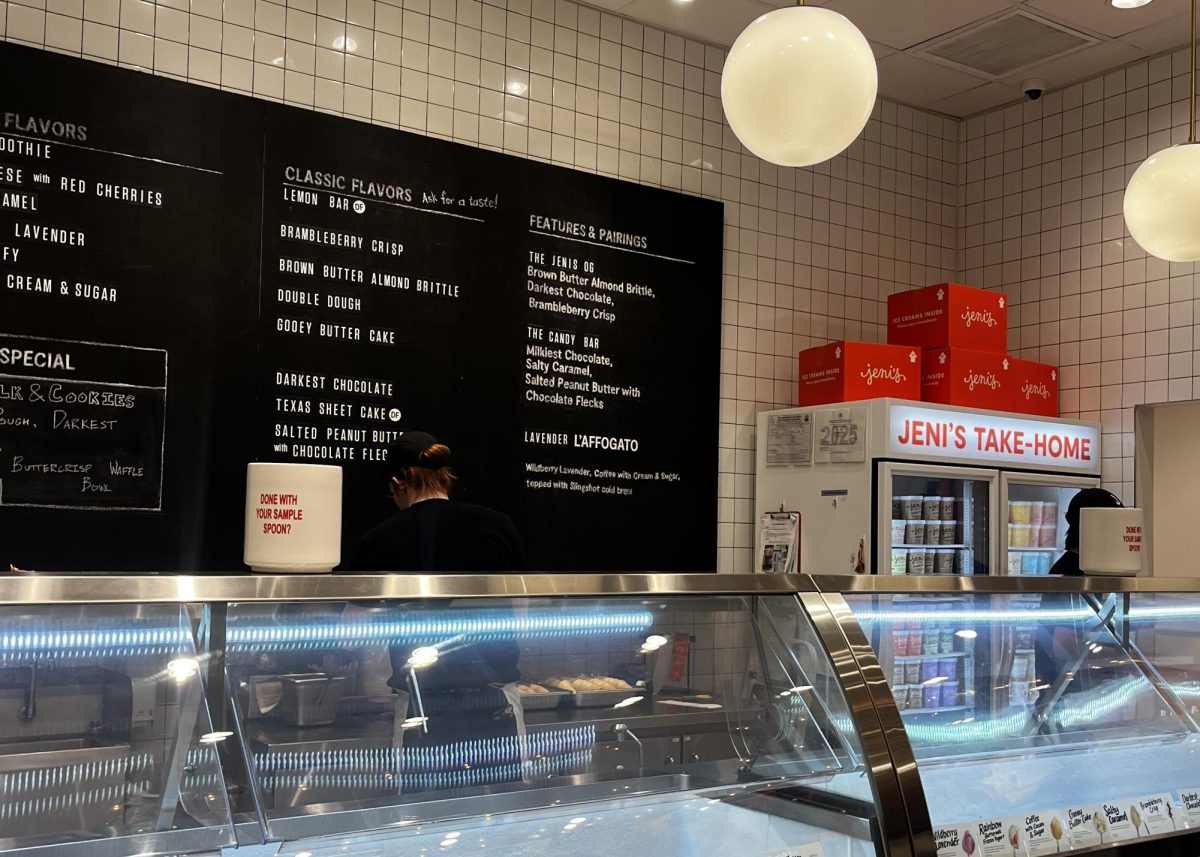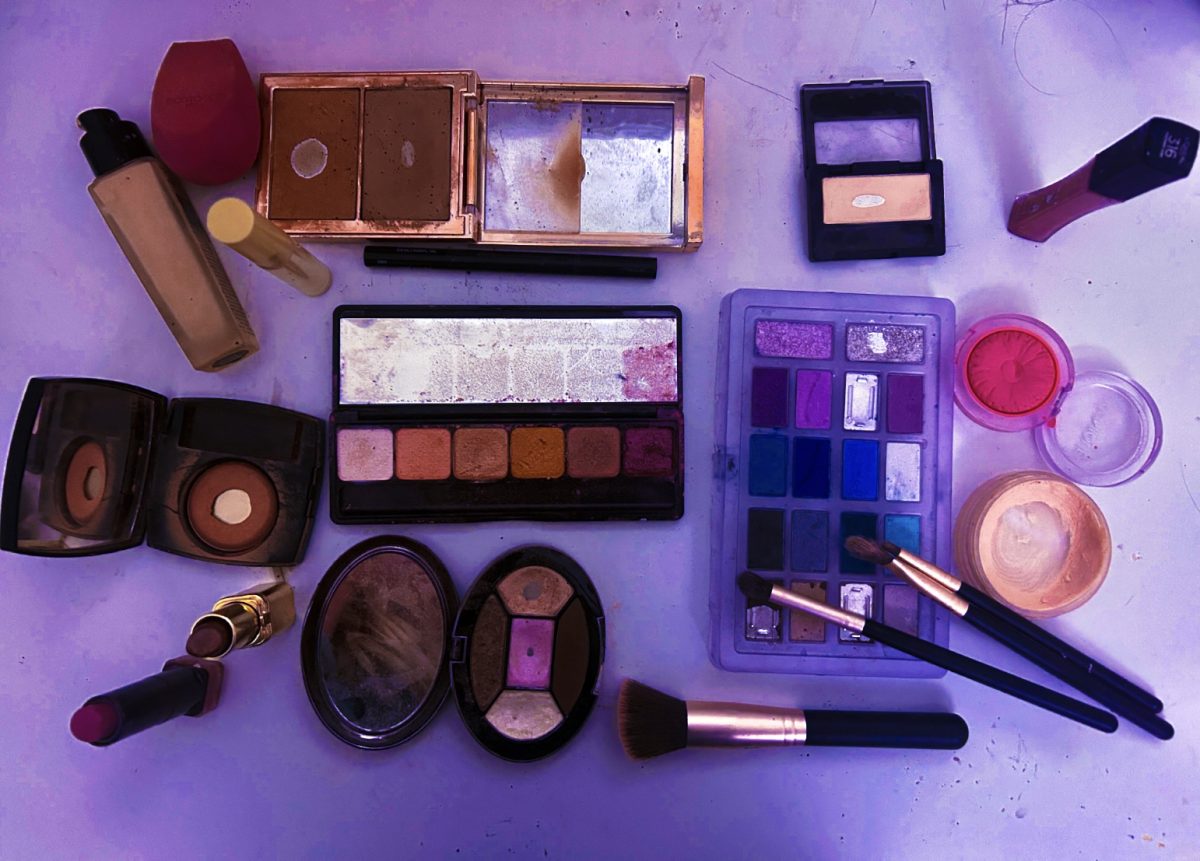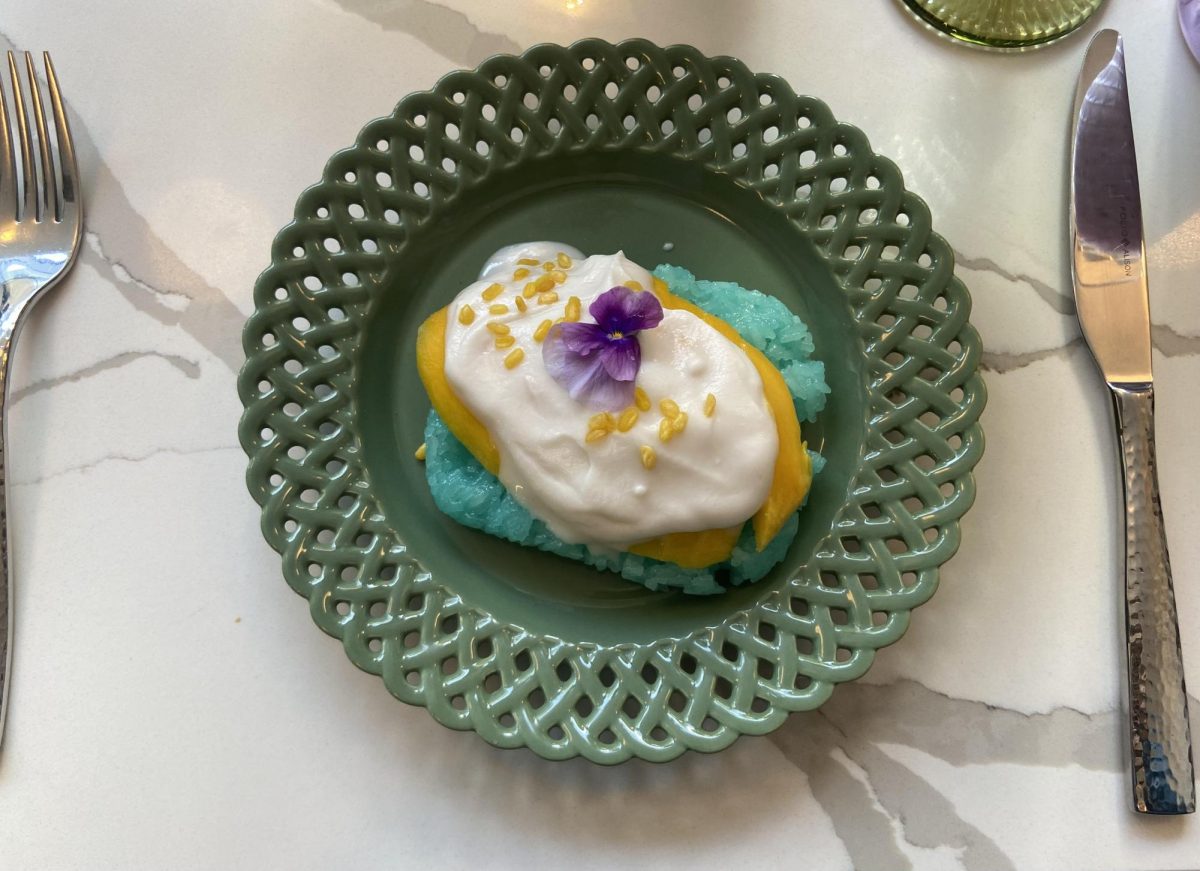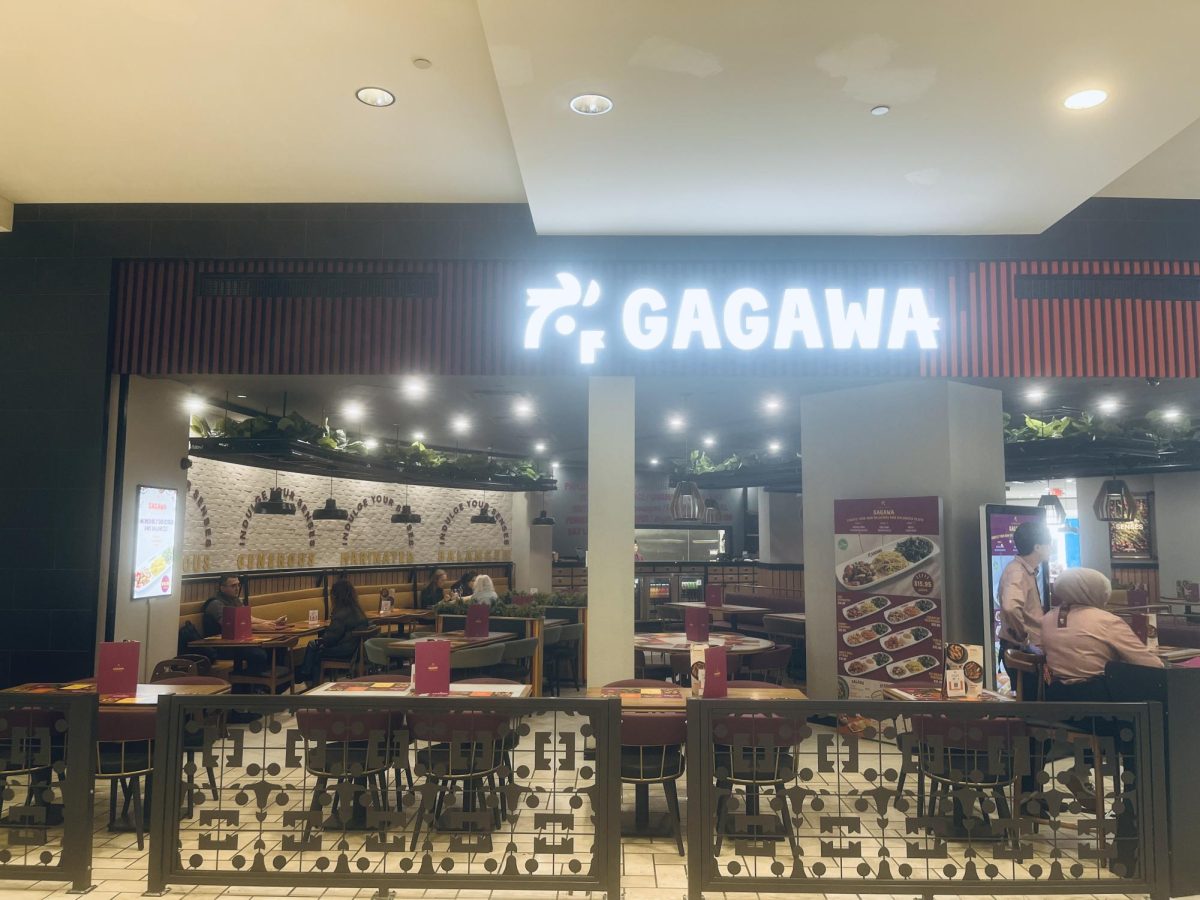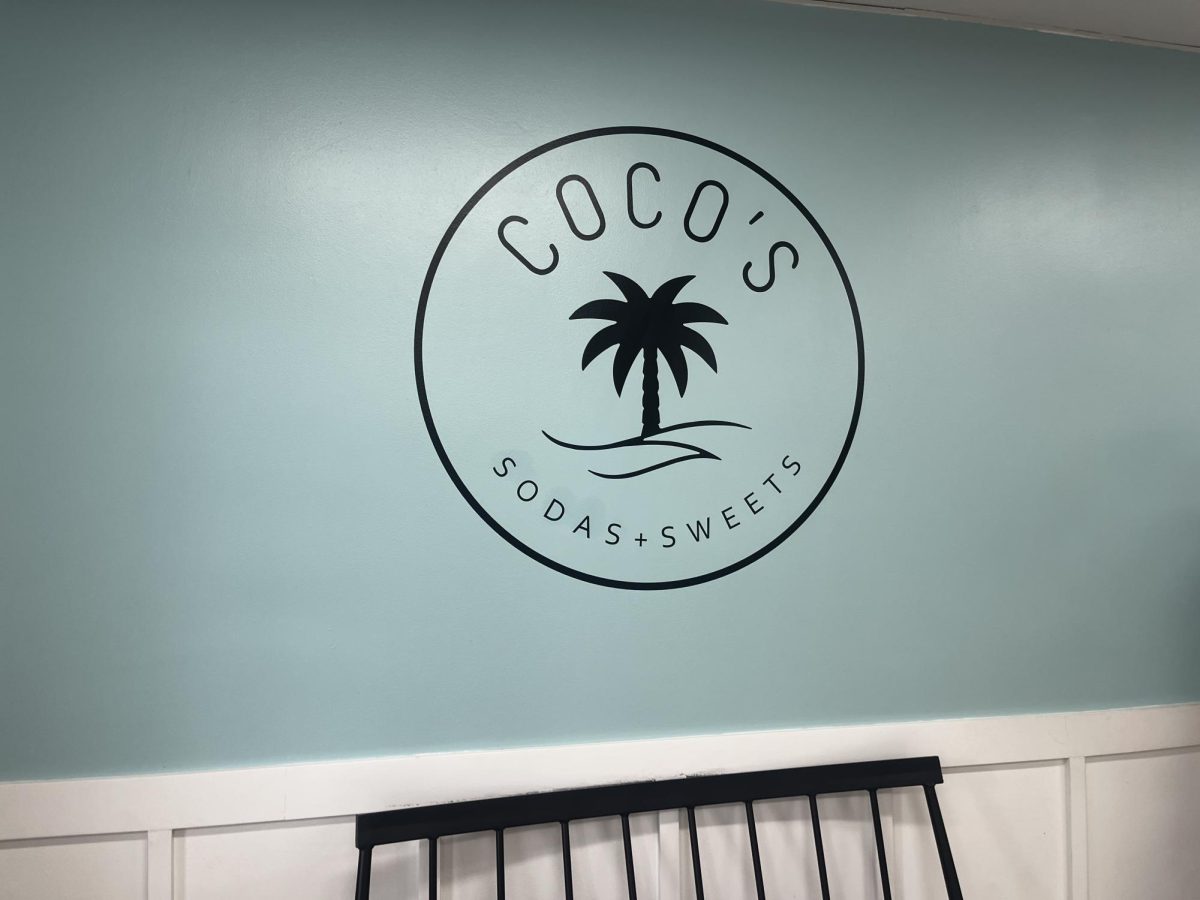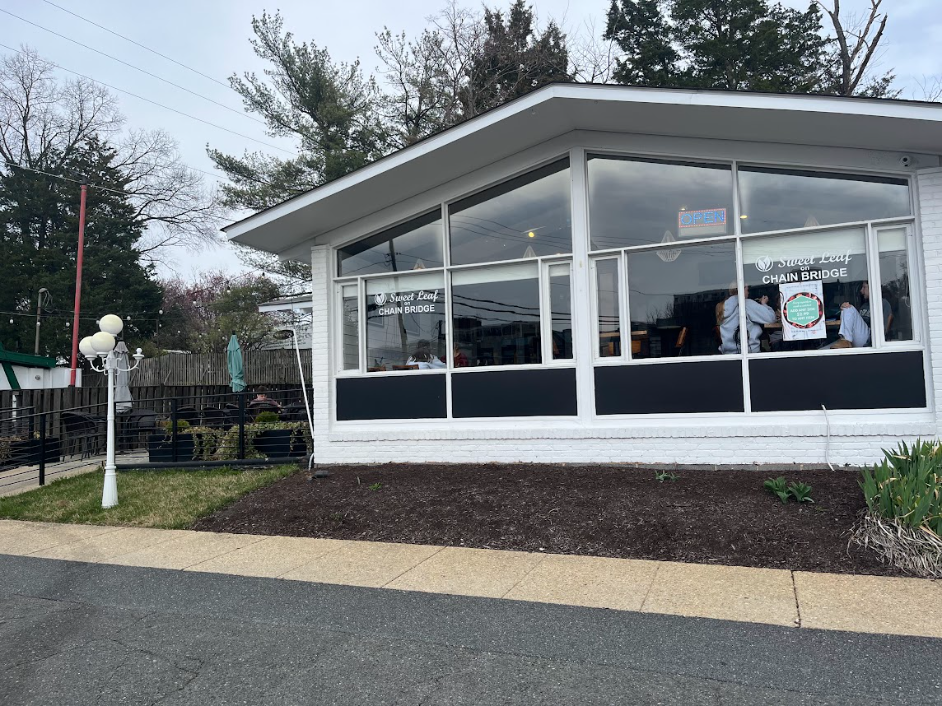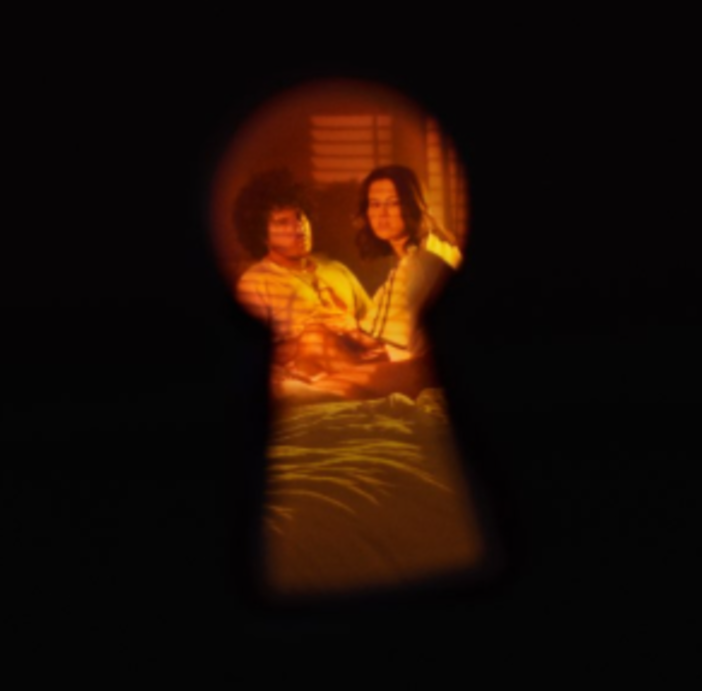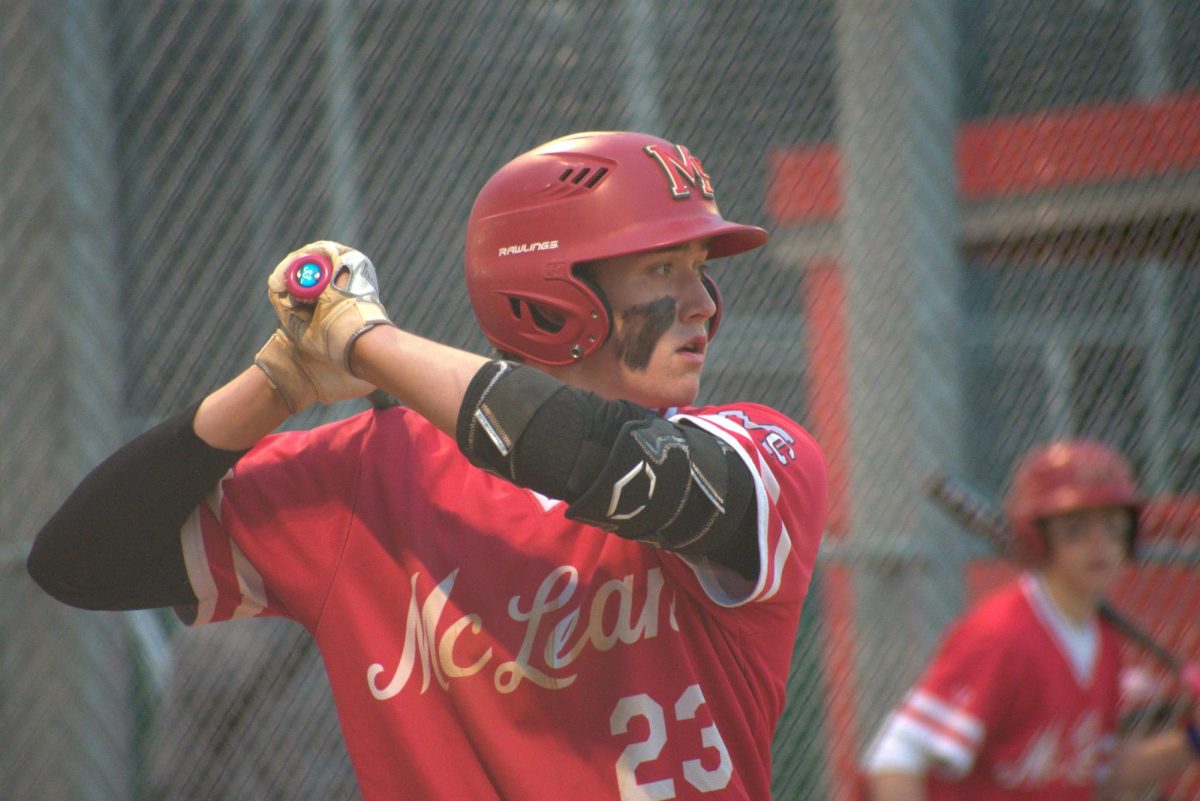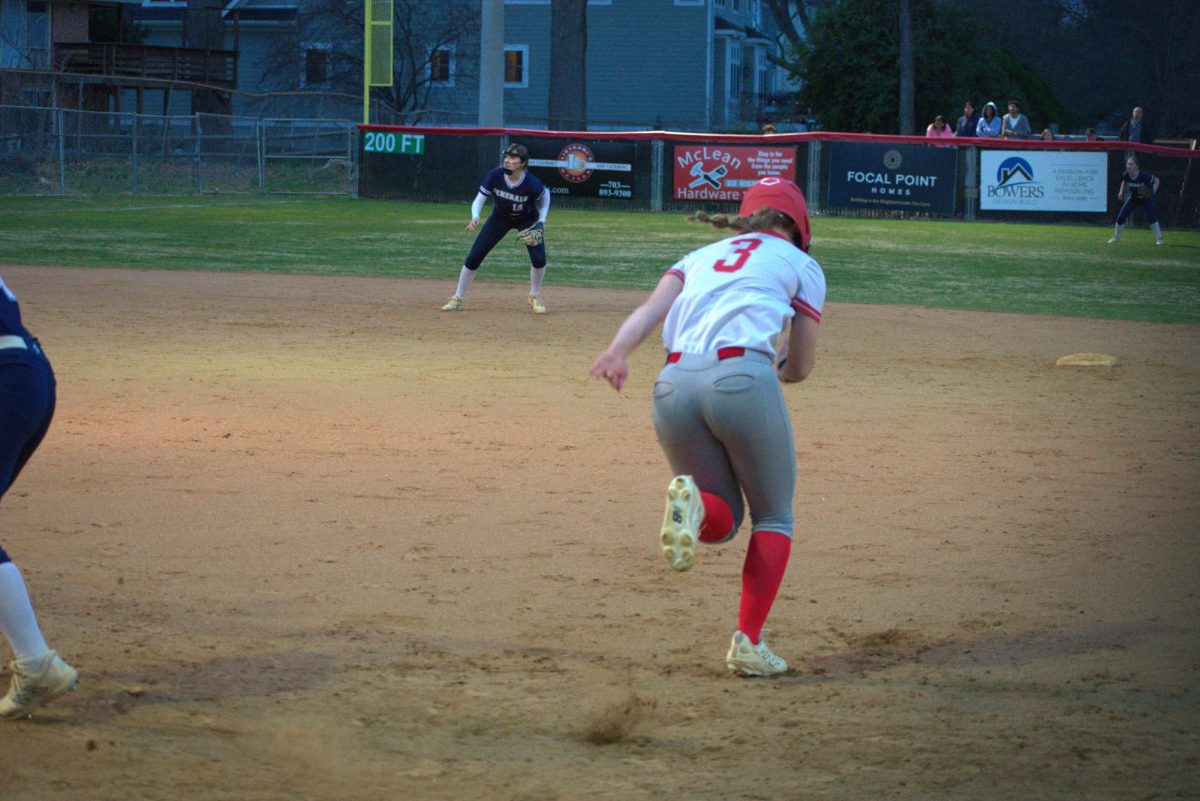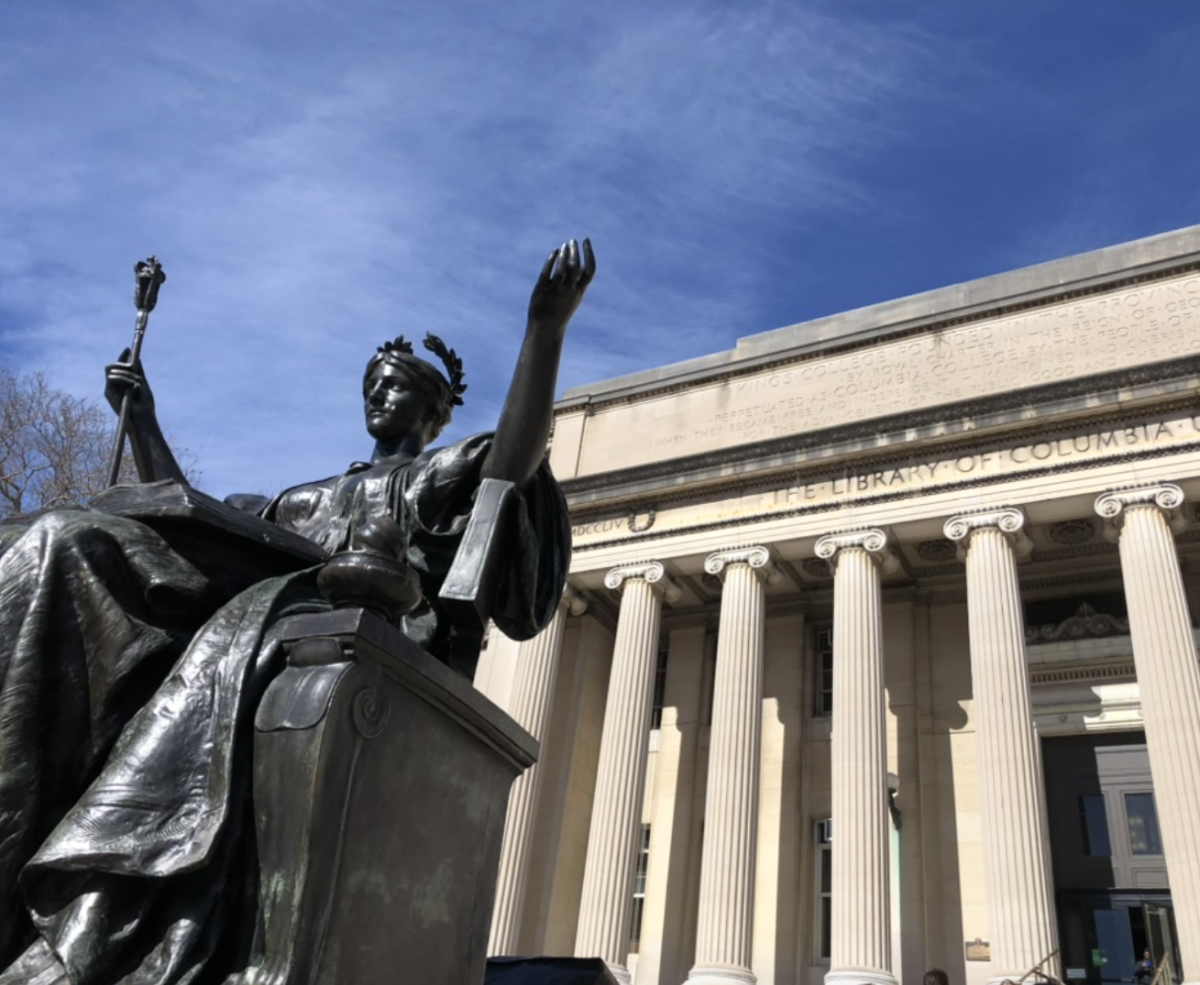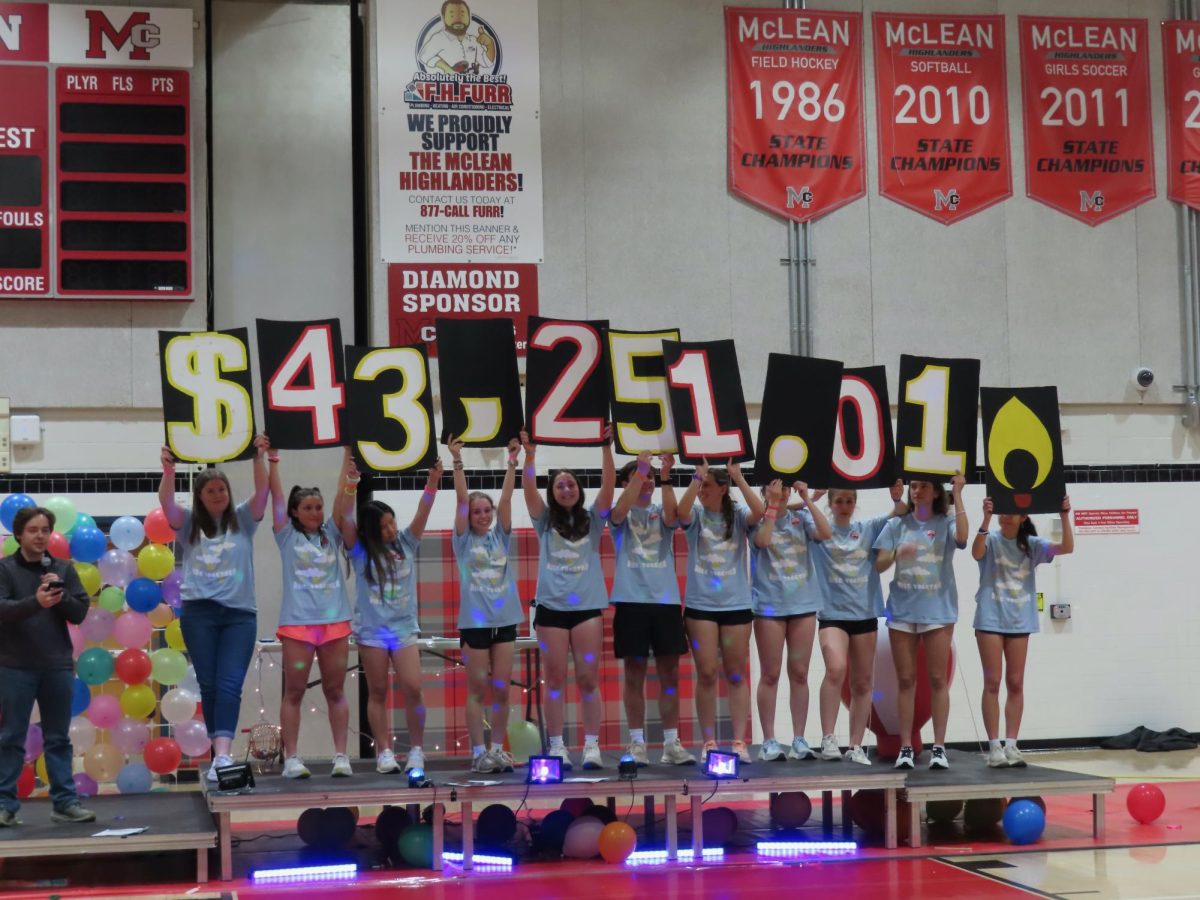TheatreMcLean’s’ newest show, “Airness,” opened on Jan. 27. With only weeks of preparation, a mere fraction of the months leading up to their preceding show “Little Women,” they put on a performance unparalleled to anything they’ve ever showcased.
The show stars Nina, played by senior Jackie Stoll, who enters an air guitar competition without any experience, expecting to easily win her first national competition. After meeting and forming a tight bond with competitors Golden Thunder (played by junior Arielle Else), Cannibal Queen (played by junior Idil Erdogan), Shreddy Eddy (played by junior Charlotte Carson) and Facebender (played by junior Jack Abba), Nina ascends from looking down on “playing pretend” to searching for Airness: a term undefined, but implied to describe the feeling a performer achieves after discovering a higher form of artistic expression.
Along the way, one of the most enthralling experiences in each actor’s performance was their own journey reaching Airness, being entirely captivated by the creativity in playing an invisible instrument.
“My favorite part is performing the air guitar…because it’s just so ridiculous and also simultaneously ridiculously fun to perform,” Else said. “I was worried I would look stupid, but once you just get up on that stage…and air guitar your heart out you realize it’s the most freeing thing in the world to just not care about what other people think.”
The show had a rocky start due to technical errors on opening night, something the Tech team smoothed out in future performances, but the performance’s vibrancy helped the audience forget any bumps in the production.
Creative Director and junior Jack Abba said the show was fun to make, notably due to the unusually large amount of personal contributions the cast and crew made to the show. Theater Director Phillip Reid allowed for expansive creative freedom, imploring each actor to find their own personal connection with their roles. The creativity really shone through in the atypical performance, which was hosted in the small “Black Box” theater as opposed to the larger auditorium used for TheatreMcLean’s other recent shows.
Along with Abba’s own outside research on Facebender, based on real rock stars and the like, he credited the hair and makeup crew for working extensively to develop their own ideas for the show.
“We basically worked the actors into their persona,” Makeup Head Sabrina Beadie said. “For example, I couldn’t give Cannibal Queen this super huge makeup look because she’s supposed to be very reserved.”
Beadie mentioned that the original “Airness” show was devoid of the detailed makeup looks that she created for McLean’s rendition of the show. She looked for outside influences, such as KISS, David Bowie, and Joan Jett, to make McLean’s version more elaborate and artistic. The unique characters felt familiar yet simultaneously new, something that can’t be said for shows like “Little Women,” where the main characters and storyline are widely recognizable.
After weeks of practice, Beadie and her crew nail down the looks in as quickly as 10 minutes, reaching up to 40 for more elaborate designs. The show relies on these quick turnarounds, especially for the character Nina, who visibly transforms through her makeup as well as hair and costumes throughout the performance. The feat was impressive and truly added to a character progression that relied on both audible and visual cues.
The show’s lighting was one of the biggest factors in making the performance what it finally became: spotlights illuminated each character’s performance to draw attention on the small stage, strobe lights created a concert-like environment and colored lights helped the audience distinguish the different characters.
The set was also decorated with minute details that added a personal touch, such as posters of rock artists Nirvana and KISS paired with the Ramones and Joe Satriani’s music included in air guitar performances and constantly referenced throughout the show. Decorating the walls alongside these posters were clocks set to the time zones of each performance location, an interesting nod that made the performance feel more intricate and deliberate. Additionally, each member of the cast and crew made their own contributions to the set, doodling on blackboards and bar tables, filling the walls with name tags and the cast signing posters designed for their characters.
“It’s really fun to see the smaller intricacies that people put into things that even I as an actor did not initially notice,” Abba said. “We really worked on taking the essence of each character and tried to portray [them as colors] colors, for example, [with] the [colored lights] that shone on them on stage.”
This was intentional in order to give the audience a feeling of connection to the show and make the main set, a bar with a side stage, as authentic as possible. It also allowed the show to be much more interactive than it would be on a larger stage. The audience was invited to cheer and boo on cue, similar to other interactive shows like “Shear Madness” at the Kennedy Center.
“It was insane to have all the audience members so close and be able to see their faces so clearly,” Else said. “It makes an actor scared to make a mistake because it would be so obvious to the audience members, whereas on a big stage most people wouldn’t even notice.”
Complete with eccentric visuals, a novel adaptation on the original plotline, and expressive performances, “Airness” was truly a show to be remembered.


